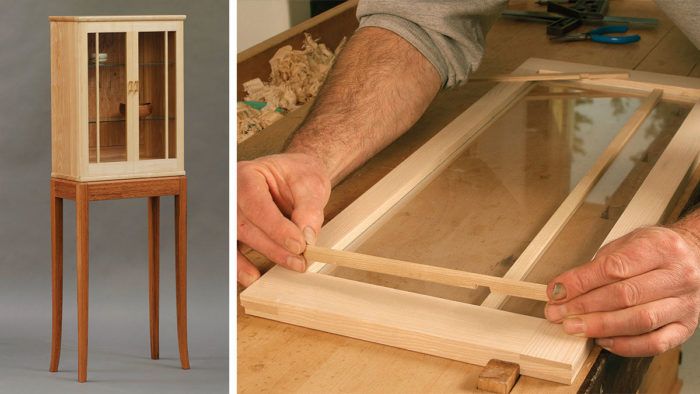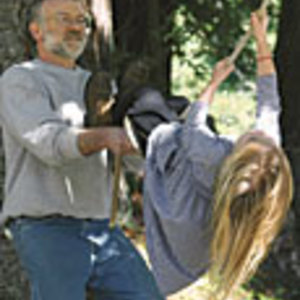Display Cabinet, the Krenov Way
An approach to seeing and building that launched a generation of furniture makers
Synopsis: The cabinet-on-stand form popularized by James Krenov uses familiar construction methods such as mortise-and-tenon joints, dowels, and bridle joints. What makes this article special are all the lessons and details Jim Budlong adds, learned in years teaching side-by-side with the master. For example, he starts with the doors and then builds the case to fit them. The doors are joined with attractive, simple bridle joints, and divided glass panels dress them up even more. The carcase is joined with dowels, which makes it easy to dry-assemble to ensure a perfect fit with the doors. The legs are shaped on the bandsaw and refined with hand tools.
James Krenov’s writings, gifted eye, love of wood, impeccable craftsmanship, and philosophical approach to woodworking have made his work timeless and influential. Although he didn’t invent the cabinet-on-stand form that he popularized, Krenov spent his career perfecting it. This cabinet has all the hallmarks of Krenov’s philosophy. Its clean lines, perfect proportions, beautiful surfaces, and special details combine to create a piece that’s inviting to touch.

I was fortunate to study with him at the College of the Redwoods Fine Woodworking Program from 1983 to 1985. And in 1989, I began teaching in the same program. I spent 14 years alongside “JK” in the classroom, teaching and learning as much as I could. His method of working is far from the ways of mass-production furniture shops. It’s personal, and that carries through in the finished product. As Krenov worked, he’d move from a sketch to a mock-up, and then to a final finished piece. He never worked from plans; rather, he’d watch a piece develop as he built it, always willing to give in to the needs of the piece instead of being stuck on one idea.
When I build, I incorporate all the lessons and details I learned in my years with Krenov. And this cabinet is a perfect example of that. It’s not technically challenging: It uses familiar construction methods such as mortise-and-tenon joints, dowels, and bridle joints. I used ash, kwila, and spalted maple for this cabinet, but don’t be limited by my choices. Finding the right combinations of wood can be as enjoyable and rewarding as building the piece. For more on Krenovian details, see the Master class on pp. 84-86.
Begin with the doors
Taking on the most difficult challenges at the beginning is energizing and provides the motivation to see you through the project. The door work is a good starting point because it requires the most accuracy. A side benefit is that I can adjust the carcase to deal with any wind in the doors.
When I mocked up this cabinet and stand out of scrap, I was able to manipulate the look and feel of the cabinet by tweaking the door frame. By running all of the stiles through vertically, the cabinet felt taller, but when the rails ran all the way across, the cabinet felt wider. Running the outside stiles all the way and the inside stiles inside the rails gave the piece a nice balance. In addition, I arranged the individual frame widths with the bottom rail the heaviest, the top rail next, then the outer stiles, and finally the center stiles. The center stiles are the lightest because there are two together. The effect is subtle but powerful and is typical of Krenov-style work.
For the full article, download the PDF below:
For more on this topic, read Krenovian Details Make a Big Difference.
From Fine Woodworking #208
Fine Woodworking Recommended Products


Sketchup Class

Blum Drawer Front Adjuster Marking Template

Get the Plan
Digital plans, a cutlist, and a SketchUp drawing for this project are available in the Fine Woodworking store.























Log in or create an account to post a comment.
Sign up Log in